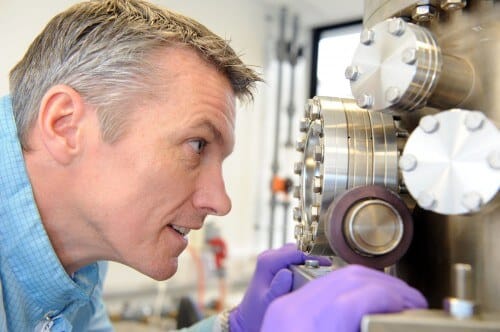Scientists from the University of Warwick in the United Kingdom, in collaboration with a subsidiary company called "Molecular Solar", have developed an organic solar cell that produces an electric voltage large enough to directly charge a lithium battery, without the need to connect multiple cells in a chain

A new breakthrough in solar technologies could lead to the development of portable electronic devices, such as digital book readers, that can be charged while walking, even in places with little lighting and partial shade.
Scientists from the University of Warwick in the UK, in collaboration with a subsidiary company called "Molecular Solar", have developed an organic solar cell that produces an electric voltage large enough to directly charge a lithium battery, without the need to connect several cells in a chain. These cell devices function properly in different lighting conditions, including partial shade, a fact that makes them portable electronic consumer products, such as digital book readers, cameras and mobile phones.
Organic photovoltaic (OPV) cells, referred to as the "third generation" of solar technologies, provide fascinating possibilities thanks to features such as cheap manufacturing, light-weight and compatibility with flexible surfaces, features that make them ideal as portable electronic accessories.
This new technology of organic photovoltaic cells is a breakthrough in the field of powering portable electronic devices at low voltage. The researchers demonstrated a cell with an electrical voltage of more than 7 volts that produces a maximum energy higher than the 4.2 volts required to operate normal lithium batteries. This is the first time that these values have been demonstrated for organic photovoltaic cells.
Explains the lead researcher: "A lightweight solar charger the size of a credit card will be able to fit the battery of portable electronic devices, such as a mobile phone, and it will also be able to charge them while we are sitting with them in the living room."
The next step for the researchers is to expand this technology beyond the laboratory scale to enable the inexpensive production of electrical charges from organic photovoltaic cells on a commercial scale. The research findings were published in the scientific journal "Advanced Energy Materials".

4 תגובות
To Emanuel: Why don't you go to the link (sub
The title "the news about the research"? There is
Possibility to receive information by phone and email.
For example the usefulness of the device?
Power per cm?
Amount of light required?
This whole section of voltages is nonsense, you can use a small regulator that costs a quarter of a dollar to regulate the voltage
If they bring an article like this, I expect more investment
I have been dealing with renewable energy for over 10 years in third world countries
A little note:
There is a global *output voltage* standard for lithium batteries, the standard is 3.7 volts (not 4.2 volts as implied above). Maybe there is also a world standard of 7.4 volts as the output voltage of a lithium battery, I haven't checked.
The source of the confusion above may be that the output voltage of the power supply to the 3.7 battery is a bit higher than 3.7 volts. For example: the output voltage of the power supply that charges the 3.7 volt battery can have an output voltage of 4.2 volts.
Why is there a global standard? Because battery manufacturers cannot know in advance which device will use their batteries, therefore they only align with the global standard.